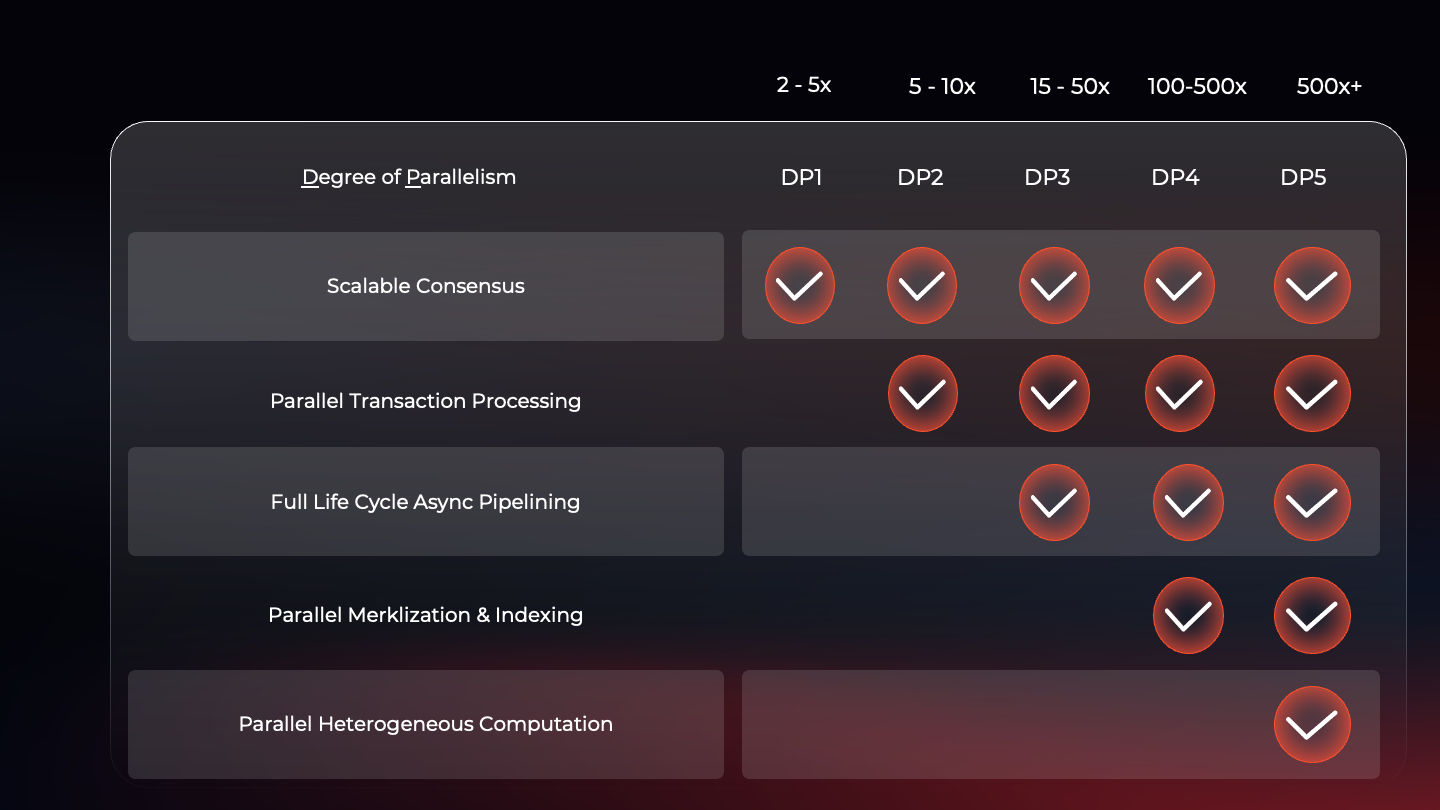Degree of Parallelism (DP)
Oct 22, 2024
With the growing complexity of Web3 applications, the need for scalability and efficiency becomes paramount. The industry is witnessing a shift towards more powerful parallel processing capabilities to meet the demands of mass adoption. The evolution from sequential processing to highly parallelized architectures marks a significant milestone in blockchain's journey. Significant strides have been made in optimizing L1 network protocols, execution engines, scheduling algorithms, and storage management to enhance overall throughput to the next scale.
To provide a comprehensive view of the existing and future technologies in L1 parallelism, we define the power of network parallelization into distinct Degree of Parallelism (DP) and their expected capabilities in enhancing the performance (p) as follows:
Note: L2 and L3 can work directly with L1 to enhance overall scalability, so they are beyond the scope of our DP definitions and this discussion.

DP0: Sequential Model (p)
Linear processing without parallel execution.
DP1: Scalable Consensus (2p~5p)
Improved consensus mechanisms with scalability, adaptivity, security and high-performance block propagation ensuring immediate finality.
DP2: DP1 + Parallel Transaction (5p~10p)
High-throughput transaction-level parallel processing by leveraging parallel speculation, scheduling, and multi-thread, multi-instruction power.
DP3: DP2 + Pipelining (15p~50p)
Incorporates multi-stage pipelined processing, significantly increasing overall throughput and resource utilization while ensuring multi-level-finality and security.
DP4: DP3 + Parallel Merklization and Accelerated State Access (100p~500p)
The pinnacle of parallelism, with a unified merklization and indexing scheme to solve IO efficiency and state bloat issues, enabling full parallelism of data access and minimizing storage costs.
DP5: DP4 + Parallel Heterogeneous Computation (500p+)
Fully utilize the asymmetric computing power of nodes and support the parallel capabilities of heterogeneous hardware, such as GPU, TEE, FHE accelerator, ZK accelerator and smart network card, to enhance the security of the whole network and applications while comprehensively promoting network parallel capabilities.
The larger the scale of the scenario, the higher DP is required. With the development of Web3 applications, some platforms have recently entered DP3 from DP2. However, to thoroughly address the scalability challenges and ensure mass adoption, transitioning to DP4 is essential.